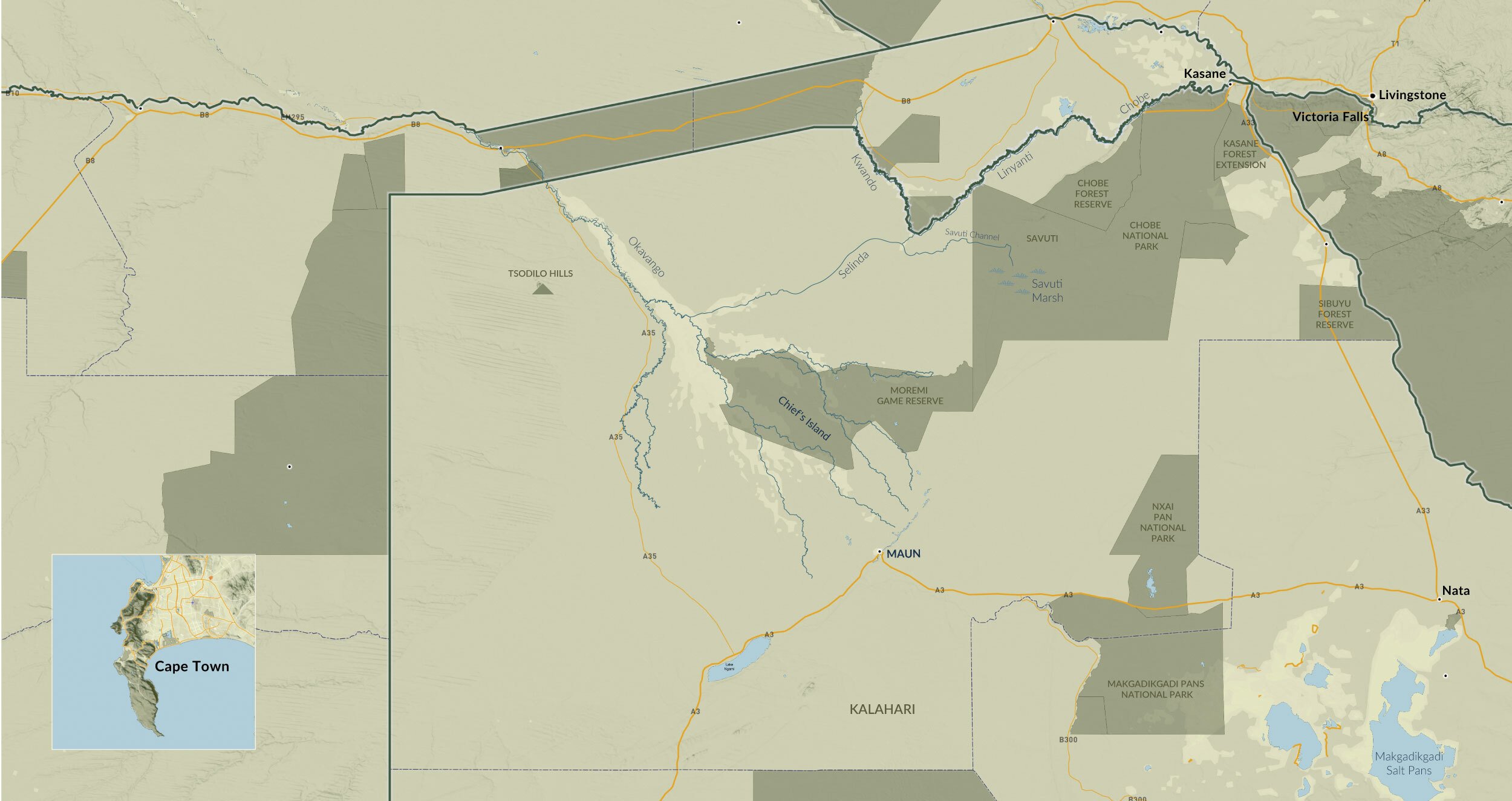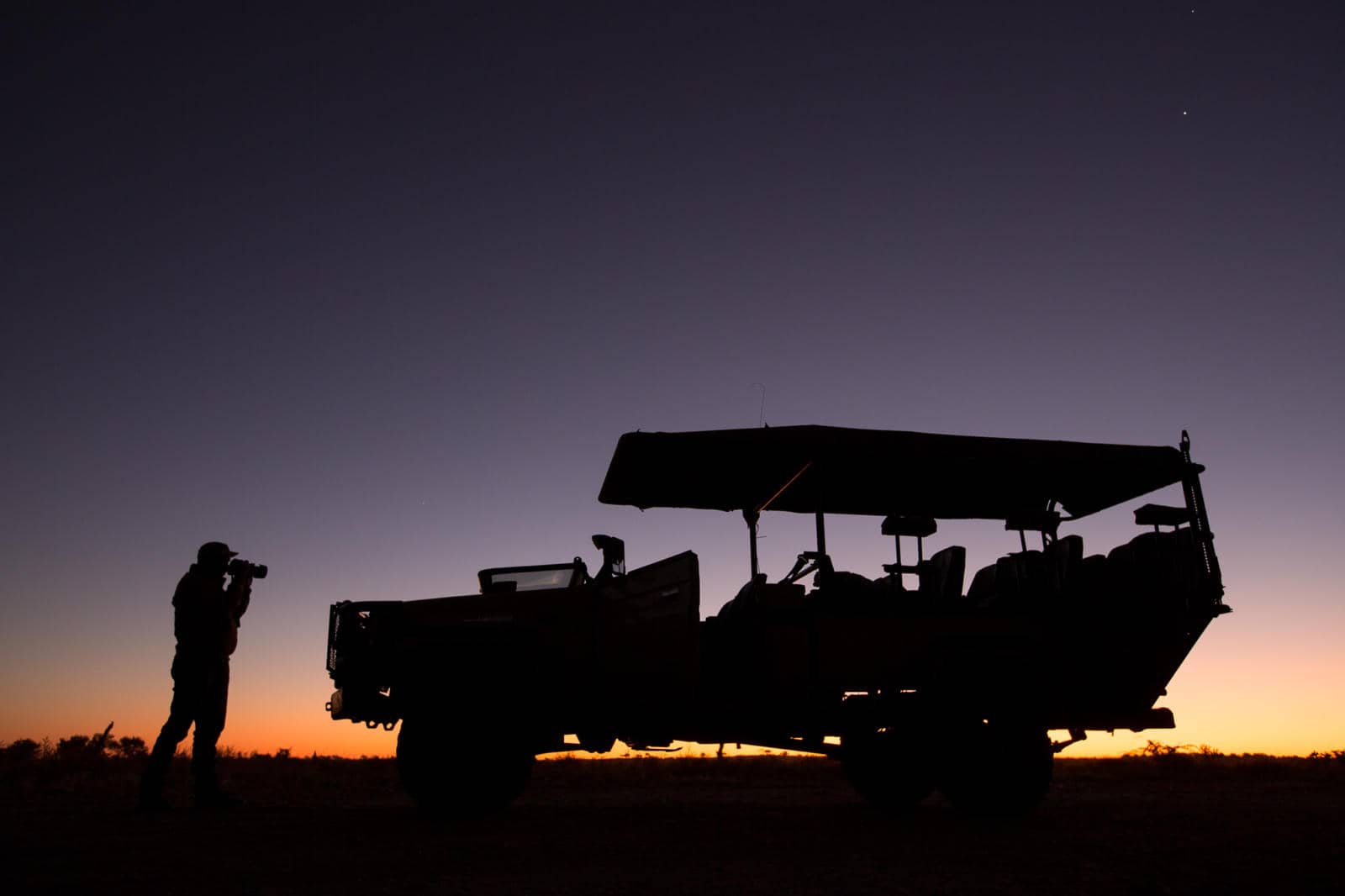An authentic mobile safari through Botswana’s most famous parks with a superb safari outfit. Visiting the Okavango (east and west Moremi), Savute and Chobe riverfront this safari follows a classic route, offering fantastic game viewing year round. For those looking for a pure safari experience and raw wilderness, a mobile safari offers the chance to safari in the style of the original pioneering explorers. Guiding is top notch, the camps are comfortable and the groups small. A great option for adventurous travellers. Extensions and variations available too.
Operated by the leaders in scheduled departure mobile safaris, Letaka Safaris, this safari combines comfortable accommodation with the company’s experienced and highly regarded guides. Guiding is key to any safari, but most importantly on a mobile safari. Here you are in excellent hands. Letaka, the operator, also founded the Okavango Guiding School and have trained many of the country’s top guides. Keeping the groups small, with a maximin of 7 people allows the guide to interact with everyone and address all interests. This creates a much more personal safari experience than the larger groups – although this comes at a premium it is worth it.
This safari explores four distinct areas within the region, Xakanaxa in west Moremi, Mababe Private Reserve in east Moremi, Savute and Chobe providing an excellent overview of the region.
The safari begins in the famous Moremi Game Reserve, with 3 nights in the beautiful Xakanaxa region. This is the heart of the Moremi, at the tip of the Mopane tongue, an area marked by mopane woodland, wide open grass floodplains and the lovely Xakanaxa lagoon. Ephemeral water pans dot the lands and make for find sundowner spots. Excellent resident game is a feature of Xakanaxa – large numbers of antelope live here and lion, leopard and hyena are seen regularly.
From here you drive to the east of the Moremi, to the Mababe Private Reserve for 3 nights, another beautiful area and also home to excellent resident game. Woodland and lagoons peppered with lilies are home to a variety of animals. Home to elephant herds and impressive predator numbers – lion, leopard and wild dog are resident here, hyena too. This area also provides diverse activities and is explored on foot, by dug-out mokoro and both day and night game drives.
Moving to central Chobe, to the Savute region for the final three nights. This is a drier, harsher landscape and the game viewing all the more dramatic for it. The predators here are ferocious and have learnt to hunt hippo and even elephant, leopards fish in the waterholes. The famous Savute marsh pride of lion, sometimes up to 17 strong, have a well earned reputation for explosive kills. Leopard and wild dog are also frequently seen. Huge numbers of elephants descend on the waterholes in the dry season.
The itinerary ends in Kasane, the gateway to the Chobe Riverfront. After an afternoon boat cruise on the Chobe River the safari ends in Kasane. An additional night or two is recommended in Chobe or Victoria Falls (1.5 hours away). Please speak to us for more information.
This itinerary is also operated in reserve, moving north to south.
This safari includes:
• Spacious and comfortable tented accommodation, including beds, bed linen and towels, with a private bathroom en-suite.
• The tents are 4 x 3m Sahara style tents with high roof with a 2 x 3m en-suite bathroom and a 2 x 3m covered area in front of the tent. The tents are fitted with solid base camp beds made up with mattresses, sheets, duvets and pillows. The tents have en-suite long drop toilet facilities and a bucket shower at the rear of the tent. Hot water provided.
• Services of a professional guide, safari chef and camp assistants, complete with a supply vehicle.
• Game drives and local transfers in customised safari vehicles.
• Exclusive camping in private campsites within the national parks and reserves.
• All entrance and camping fees within the national parks and reserves.
• All meals and drinks (mineral water, soft drinks, beer, wine and G&T) whilst in Letaka Tented Camps
• All activities as specified in the itinerary.
Please speak to us for extensions and additional activities. Helicopter or fixed wing scenic flights over the Okavango are highly recommended. For those looking to explore deeper into the heart of the Delta for a water safari extensions to lodges can be arranged.

